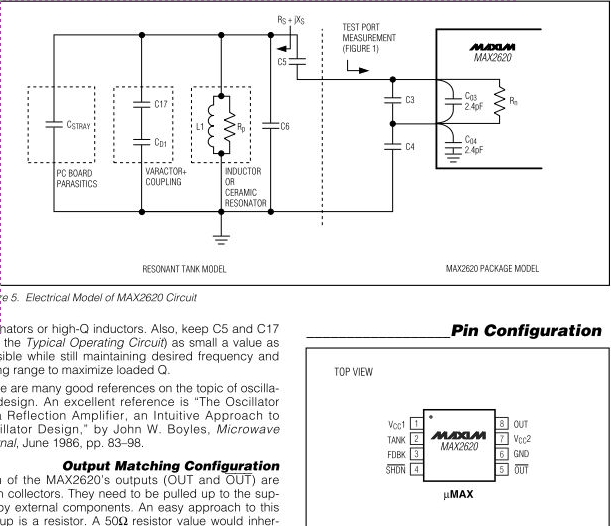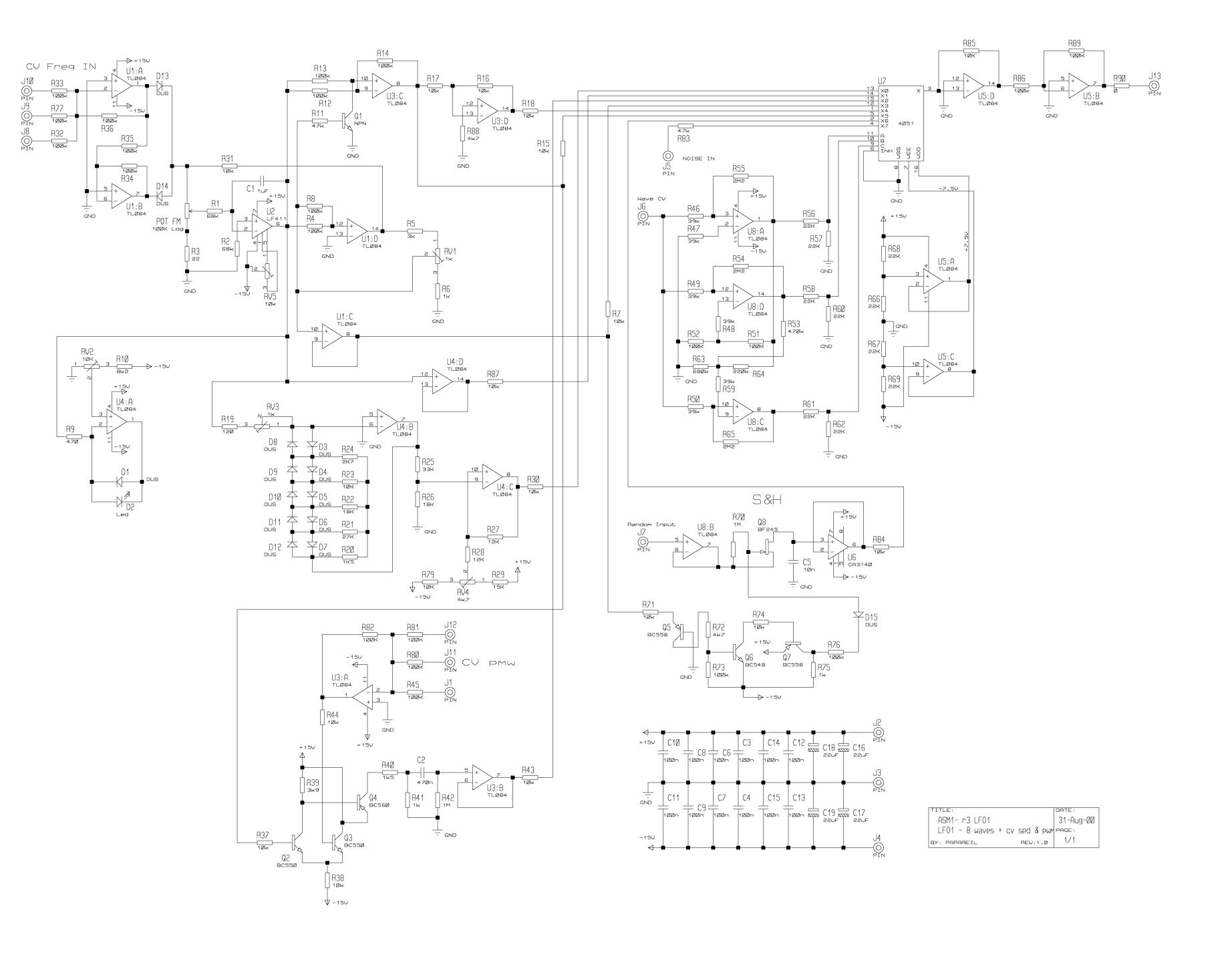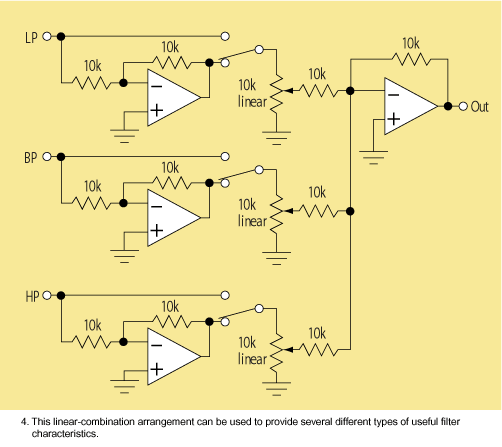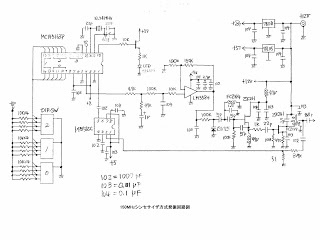
Bubba Oscillator
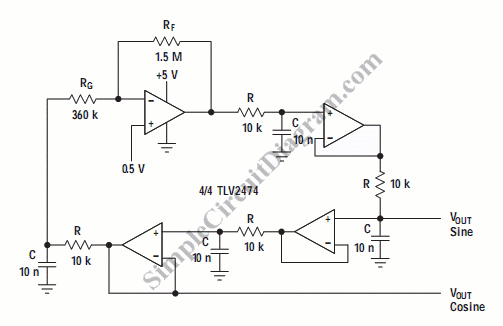
One example of the phase shift oscillator is the Bubba oscillator. This oscillator achieves a 45-degree phase shift for each section from a quad op-amp package.
The Bubba oscillator is a type of phase shift oscillator that utilizes a quad operational amplifier (op-amp) to create a stable sine wave output. The design typically consists of four identical sections, each contributing a 45-degree phase shift, resulting in a total of 180 degrees of phase shift when combined with the feedback network. This configuration allows for the necessary conditions to sustain oscillations, as the total phase shift around the loop must equal 360 degrees.
In a typical implementation, the Bubba oscillator circuit includes resistors and capacitors arranged in such a way that they form a low-pass filter for each op-amp stage. The feedback network is designed to provide the required phase shift and gain to ensure stable oscillation. The output frequency can be adjusted by varying the values of the resistors and capacitors in the circuit, allowing for flexibility in the design.
The stability and frequency accuracy of the Bubba oscillator make it suitable for various applications, including signal generation in communications, audio synthesizers, and test equipment. Additionally, the use of a quad op-amp package allows for compact circuit designs, reducing the overall footprint of the oscillator in electronic systems.One example of the phase shift oscillator is Bubba oscillator. This oscillator gets 45 degree phase shift for each section from quad op-amp package. The.. 🔗 External reference
The Bubba oscillator is a type of phase shift oscillator that utilizes a quad operational amplifier (op-amp) to create a stable sine wave output. The design typically consists of four identical sections, each contributing a 45-degree phase shift, resulting in a total of 180 degrees of phase shift when combined with the feedback network. This configuration allows for the necessary conditions to sustain oscillations, as the total phase shift around the loop must equal 360 degrees.
In a typical implementation, the Bubba oscillator circuit includes resistors and capacitors arranged in such a way that they form a low-pass filter for each op-amp stage. The feedback network is designed to provide the required phase shift and gain to ensure stable oscillation. The output frequency can be adjusted by varying the values of the resistors and capacitors in the circuit, allowing for flexibility in the design.
The stability and frequency accuracy of the Bubba oscillator make it suitable for various applications, including signal generation in communications, audio synthesizers, and test equipment. Additionally, the use of a quad op-amp package allows for compact circuit designs, reducing the overall footprint of the oscillator in electronic systems.One example of the phase shift oscillator is Bubba oscillator. This oscillator gets 45 degree phase shift for each section from quad op-amp package. The.. 🔗 External reference
